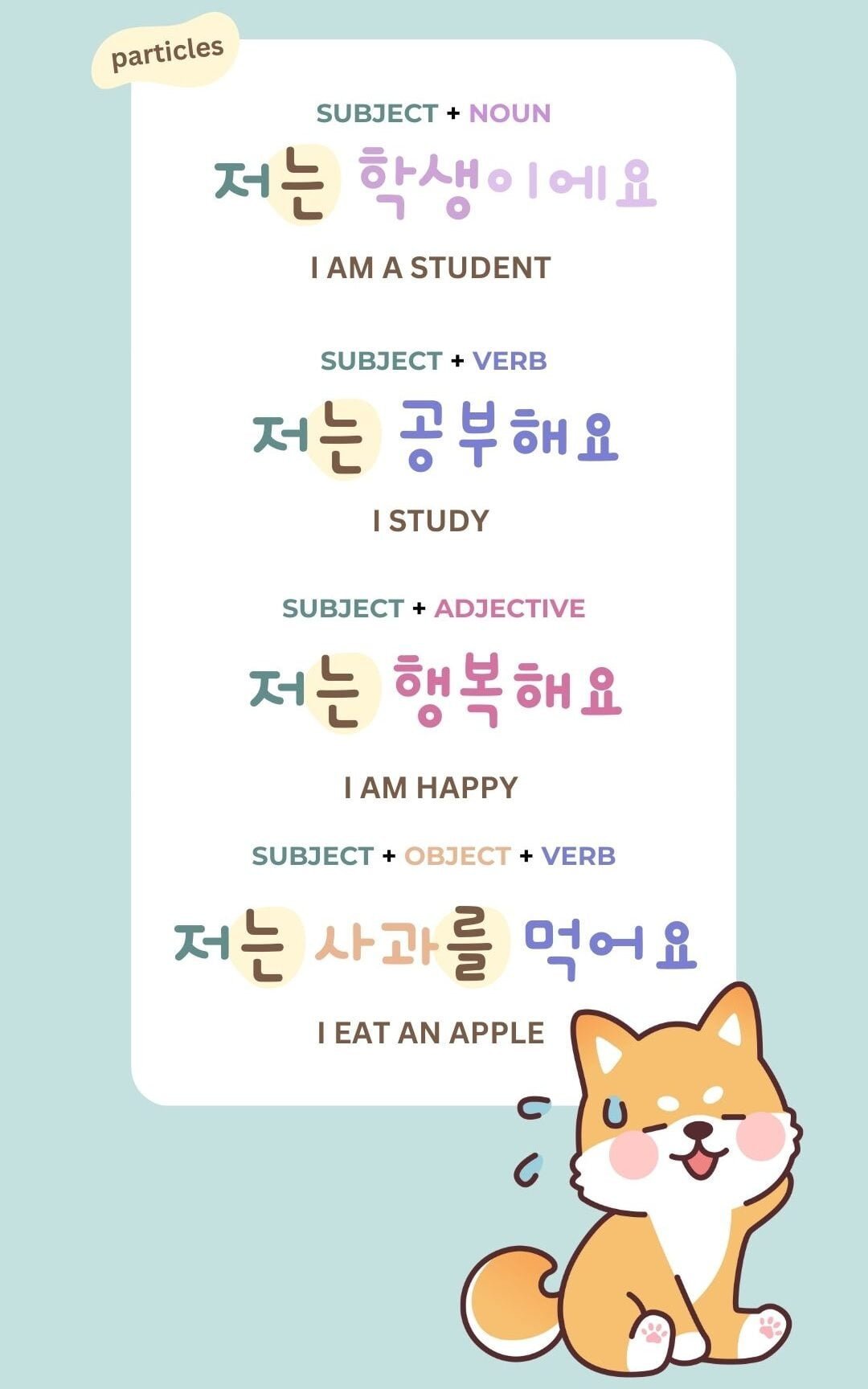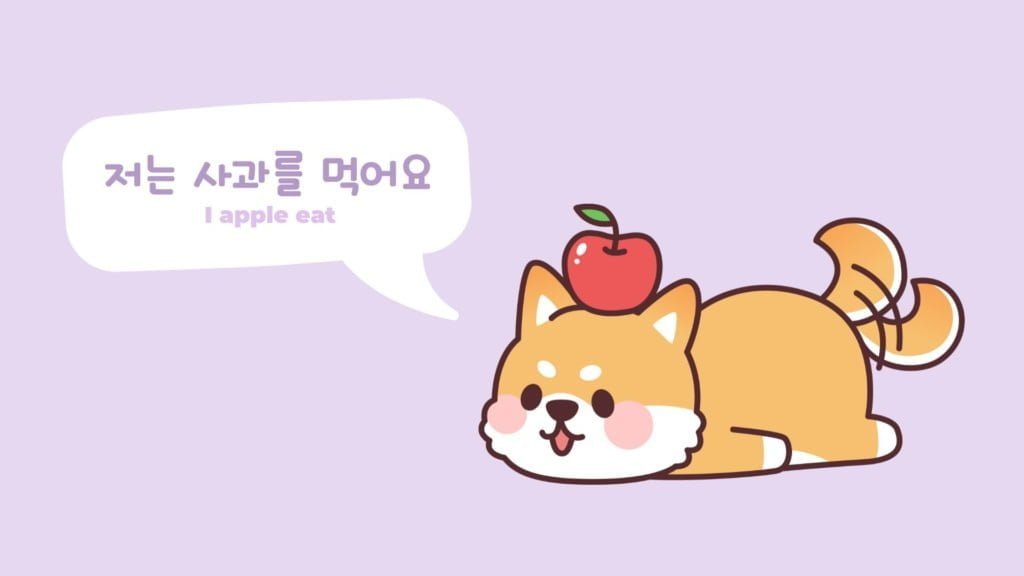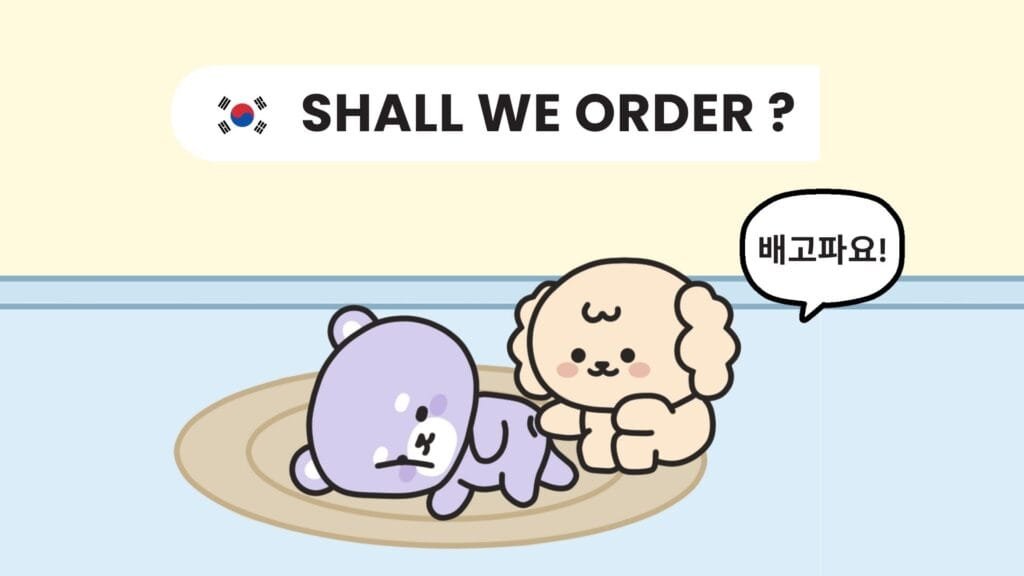After learning the Korean alphabet (Hangul), you’re ready to tackle the learning of the basic sentence structure in Korean. Once you get used to it, the basic Korean sentence structure is not that complicated. But once you get into more complex sentences, it can quickly get trickier.
The Korean sentence structure is often said to be one of the most complicated things to learn for a Korean learner. It’s challenging to master and get used to. Only a lot of practice will help in that case.
In this article, I will try to explain it clearly while keeping it short. You can then later use this post as a reminder if you have a doubt – I don’t want to overwhelm you with too much information.
Basic Korean Sentence Structure
As you know, the basic word order for a sentence in English will be S – V – O. For example, “I eat an apple”
In Korean, the basic word order will follow: S – O – V (I apple eat)


In Korean, the verbs and adjectives will come at the end of your sentence, which is the most important thing to remember.
The rest of the words can often loosely be put where you want them to go, as long as the verb comes at the right position. But to make it easier to learn, you can remember the basic Korean sentence structure. As you improve in Korean, you will learn that you can tweak the order of words quite loosely. Following the context and emphasis you want to put, your sentences will change.
For now, we will stick to the most basic Korean sentence structure for you to get used to it.
Different Types of Basic Korean Sentence Structures
- Subject + Noun
- 저는 학생이에요 (I am a student)
- Subject + Verb
- 저는 공부해요 (I study)
- Subject + Adjective
- 저는 행복해요 (I am happy)
- Subject + Object + Verb
- 저는 사과를 먹어요 (I eat an apple)

Note that when you form a sentence with a noun, you add “이다”. 이다 can be conjugated like a verb or an adjective but isn’t considered as one. It is used to state that a noun is a noun. It is translated to “to be”.
The Subject in Korean
As you might have heard or already understood, in Korean, the subject is often omitted. Korean refers heavily to the context, and you can understand what the subject is following it.
Of course, in some cases, it can be difficult. Even Koreans sometimes get confused if they’re not focused enough on the conversation, or if the people involved in the conversation aren’t on the same page.
This sentence :
저는 학생이에요
can become this :
학생이에요
As well as this sentence :
저는 사과를 먹어요
can become this :
사과를 먹어요
The Particles in Korean
In the same case as the subject, particles can also be omitted in conversational Korean.
사과를 먹어요
becomes
사과 먹어요
This only happens when the sentence’s meaning remains clear even without particles.
Wrap up
For now, you know how to make very simple sentences in Korean! Next up, we will learn how to complexify your sentences with adverbials.
Happy learning!




